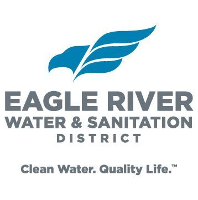South Side resource center addresses growing food insecurity need during holiday season – KSAT

Report on Community-Based Interventions Addressing Food Insecurity and Sustainable Development Goals in Bexar County
1.0 Introduction: The Challenge to SDG 2 (Zero Hunger)
Food insecurity presents a significant challenge in Bexar County, directly impeding progress toward Sustainable Development Goal 2 (Zero Hunger). According to data from the San Antonio Metropolitan Health District, the issue affects a substantial portion of the population.
- Overall Population: 14% of residents experience food insecurity.
- Child Population: One in five children faces food insecurity, highlighting a critical vulnerability.
This situation is particularly acute in areas designated as “food deserts,” which lack access to affordable and nutritious food, thereby exacerbating health and economic disparities and challenging the principles of SDG 10 (Reduced Inequalities) and SDG 11 (Sustainable Cities and Communities).
2.0 The Resource Center at Villa Coronado: An Integrated SDG-Focused Initiative
In response to these challenges, the San Antonio Metropolitan Health District has established the Resource Center at Villa Coronado. This pioneering, city-run facility is strategically located in a high-need South Side community to provide targeted support and advance multiple Sustainable Development Goals.
2.1 Strategic Objectives and SDG Alignment
The center’s placement and services are designed to create a community-centered hub that addresses interconnected issues of poverty, health, and inequality.
- Combatting Hunger (SDG 2): The primary function is distributing essential food items, including fresh produce and infant formula, to directly counter food insecurity.
- Promoting Health and Well-being (SDG 3): By providing nutritious food and offering health classes, the center addresses the high rates of chronic disease prevalent in the area.
- Alleviating Poverty (SDG 1): The center offers assistance with utility bills and provides non-food necessities like diapers, easing the financial burden on low-income families.
- Building Sustainable and Inclusive Communities (SDG 11): The facility acts as a central, accessible point for community support, strengthening local resilience and inclusivity.
3.0 Services and Community Impact
The Resource Center has observed an increasing demand for its services, indicating a growing need within the community. The integrated service model provides comprehensive support.
3.1 Core Services Provided
- Distribution of fresh produce
- Provision of infant formula and diapers
- Health and wellness classes
- Assistance with utility bill payments
- Public access computer facilities
4.0 Future Outlook and Scalability
The success of the Resource Center at Villa Coronado has generated calls for its replication in other neighborhoods. Community advocates and Metro Health officials envision expanding this model to create a network of similar centers across San Antonio. Such an expansion would scale the positive impacts on the Sustainable Development Goals, fostering a more equitable and resilient urban environment for all residents. The current center remains open to any individual in need, serving as a vital model for future community development initiatives.
Analysis of Sustainable Development Goals in the Article
-
Which SDGs are addressed or connected to the issues highlighted in the article?
The article primarily addresses two Sustainable Development Goals (SDGs):
- SDG 2: Zero Hunger: The central theme of the article is food insecurity in Bexar County. It explicitly states that a significant portion of the population, especially children and seniors, struggles to access enough food. The establishment of the Resource Center to provide produce and infant formula directly targets the goal of ending hunger.
- SDG 3: Good Health and Well-being: The article connects food insecurity to negative health outcomes. It mentions that the area served by the resource center “experiences higher rates of chronic disease.” The center, run by the San Antonio Metropolitan Health District, not only provides food but also offers “health classes,” directly contributing to the goal of promoting well-being and preventing disease.
-
What specific targets under those SDGs can be identified based on the article’s content?
Based on the issues discussed, the following specific SDG targets can be identified:
- Target 2.1: By 2030, end hunger and ensure access by all people, in particular the poor and people in vulnerable situations, including infants, to safe, nutritious and sufficient food all year round. The article highlights the vulnerability of “older adults and families with younger children” and the center’s efforts to provide “fresh produce” and “infant formula” in a “food desert,” which directly aligns with this target.
- Target 3.4: By 2030, reduce by one third premature mortality from non-communicable diseases through prevention and treatment and promote mental health and well-being. The article’s statement that the community “experiences higher rates of chronic disease” and the health department’s response of providing access to fresh produce and “health classes” are direct actions aimed at preventing non-communicable diseases, thus supporting this target.
-
Are there any indicators mentioned or implied in the article that can be used to measure progress towards the identified targets?
Yes, the article mentions and implies specific indicators that can be used to measure progress:
- Indicator for Target 2.1 (Implied: 2.1.2 Prevalence of moderate or severe food insecurity): The article provides precise data points that serve as a baseline for this indicator. It states that “14% of residents” and “one in five” children in Bexar County face food insecurity. Progress towards Target 2.1 could be measured by tracking the reduction in these percentages over time.
- Indicator for Target 3.4 (Implied: 3.4.1 Mortality rate attributed to cardiovascular disease, cancer, diabetes or chronic respiratory disease): The article implies this indicator by stating that the area “experiences higher rates of chronic disease.” While it does not provide a specific mortality rate, it identifies the prevalence of chronic disease as a key issue. Progress could be measured by monitoring the rates of these diseases in the community to see if the interventions, such as providing fresh produce and health education, are having a positive impact.
-
Create a table with three columns titled ‘SDGs, Targets and Indicators” to present the findings from analyzing the article.
SDGs Targets Indicators SDG 2: Zero Hunger Target 2.1: End hunger and ensure access by all people, in particular the poor and people in vulnerable situations, including infants, to safe, nutritious and sufficient food all year round. Prevalence of food insecurity: The article specifies “14% of residents” and “one in five children” face food insecurity, serving as a direct measure. SDG 3: Good Health and Well-being Target 3.4: Reduce by one third premature mortality from non-communicable diseases through prevention and treatment and promote mental health and well-being. Prevalence of chronic disease: The article mentions the community “experiences higher rates of chronic disease,” which can be tracked to measure the impact of health interventions.
Source: ksat.com
What is Your Reaction?
 Like
0
Like
0
 Dislike
0
Dislike
0
 Love
0
Love
0
 Funny
0
Funny
0
 Angry
0
Angry
0
 Sad
0
Sad
0
 Wow
0
Wow
0




















































.jpg.webp?itok=0ZsAnae9#)























